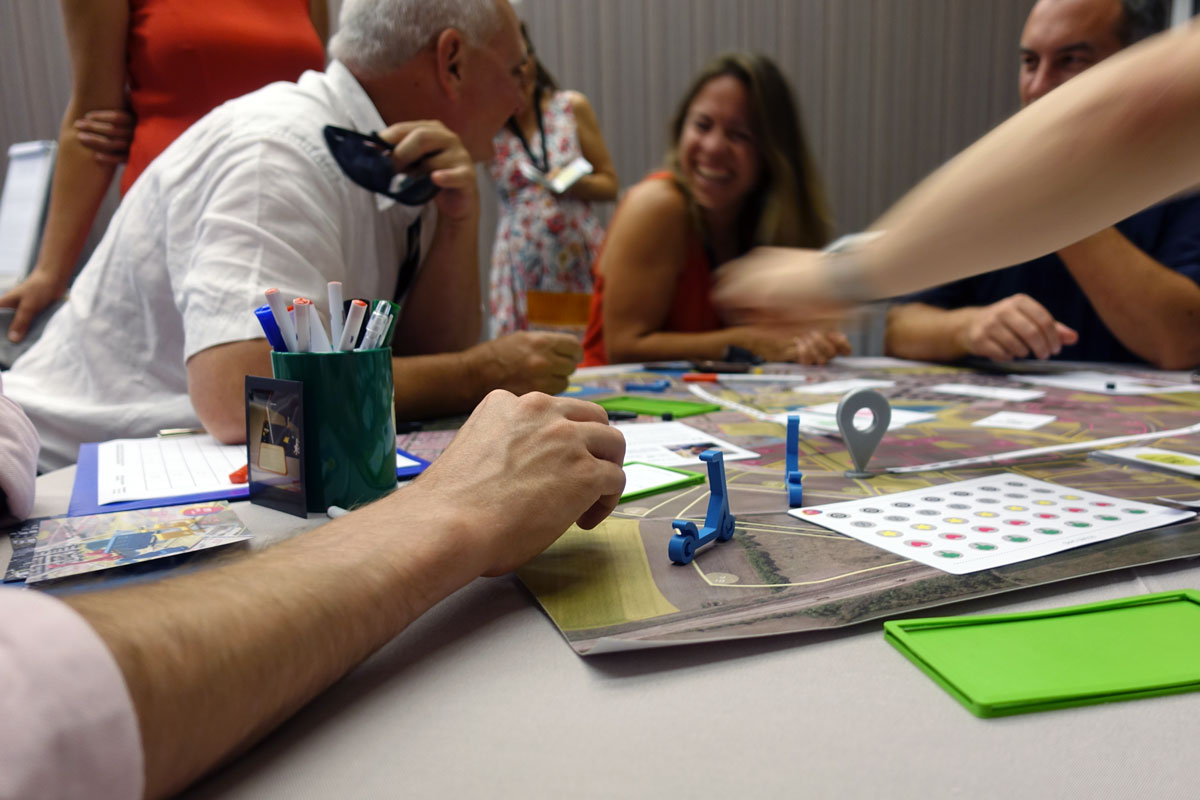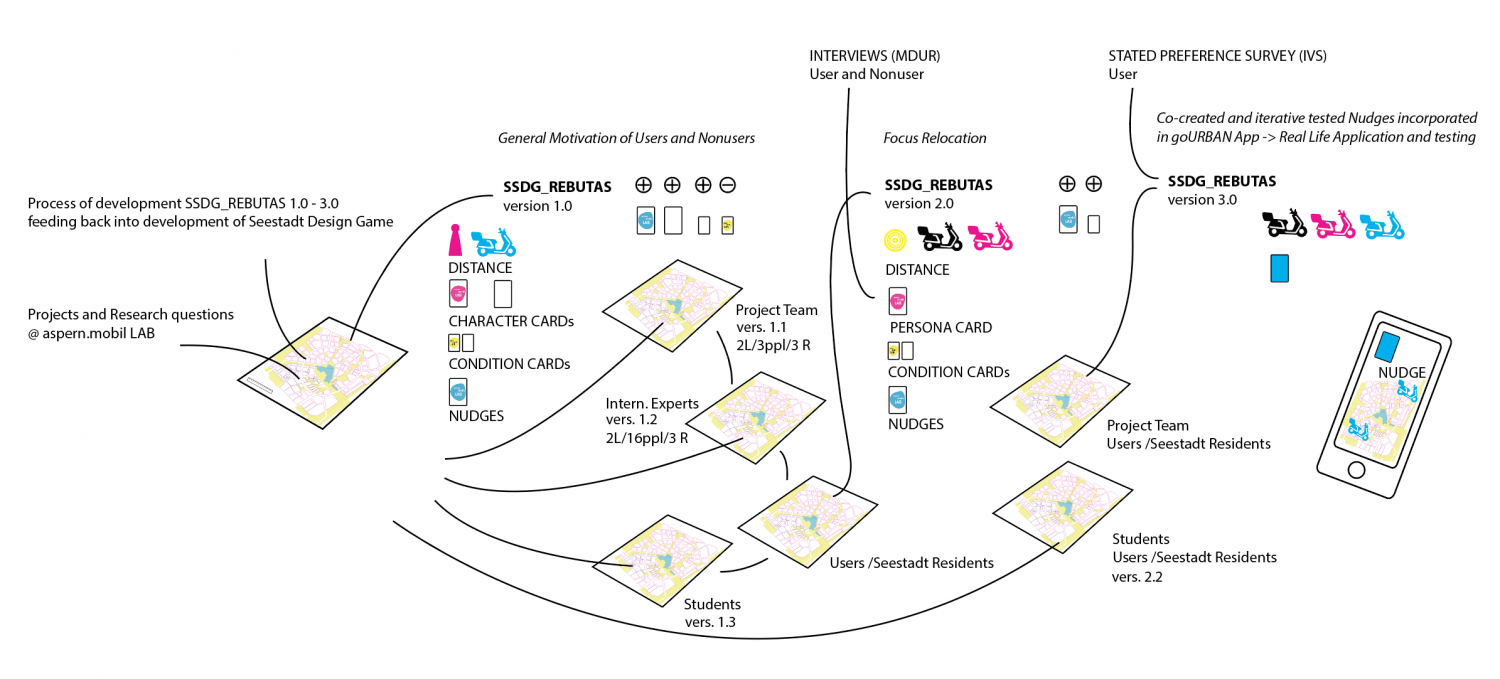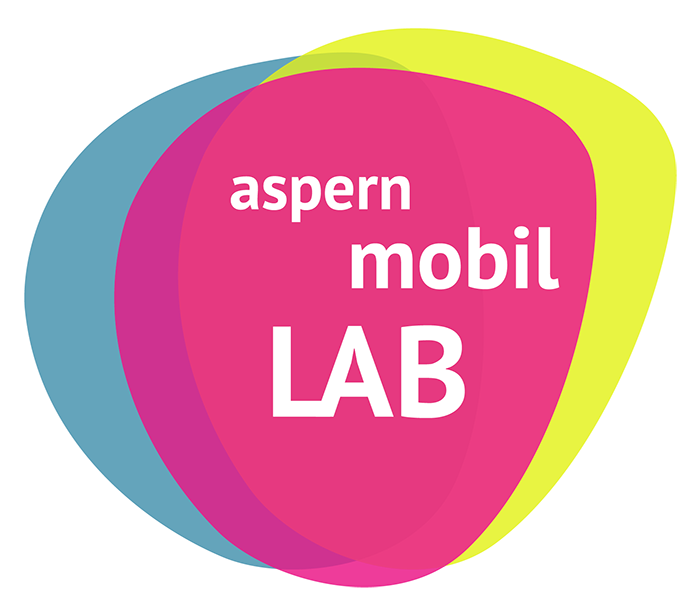Seestadt design game

Design Game_Gameround, © aspern.mobil LAB | Wagner
Based on the Smart City Seestadt game field, the Seestadt Design Game explores and develops settings for playful exchanges with participants and accompanies projects on various research questions.
With reference to planning games used in the fields of architecture and spatial planning as well as serious games in computer science, players of the Seestadt Design Game create personas and scenarios, design morphologies and taxonomies for complex research and development projects in multi-stakeholder environments.
On a scale of 1:10000, Seestadt becomes a foldable tablecloth and playing field. Based on the larger research mat, the satellite image and building fields offer contextual reference. Depending on the participants, additional knowledge about urban space, mobility and location (POI, problems, etc.) will be located and discussed.
3D game figures are expanded as needed with character cards, environmental cards, event cards or action cards, or adapted and co-created during the game depending on the research question. In addition, the game dynamics can be controlled analogously with tokens and charts or extended by a digital layer involving the smartphone.
The design game serves to align knowledge, perspectives and joint learning, supports communication and mediation of research designs and serves to open up design processes for co-creation. The systematic procedure in iterative game rounds is recorded as game steps, new contents and maps are recorded and then analysed qualitatively and documentarily.
Using the example of the LAB project Rebutas and the topic of reactive micromobility and free-floating sharing systems, different perspectives and roles (users, providers, city administration, etc.) were defined into personas with project partners in iterative game rounds with Dipl.Ing. Marlene Wagner and Dipl.Ing. Michael Habiger. In doing so, behaviour and decision-making moments could be better understood. In the further development of the design game, possible non-monetary incentives were collected and gamification and trustworthiness models were created for the field test.
The (Seestadt) Design Game can be adapted for other districts or even with a fictitious spatial basis of different scale depending on the research and development question and can be used with 1 to 2 facilitators depending on the environment and players.

Design Game_ IterationsREBUTAS, © aspern.mobil LAB | Wagner







